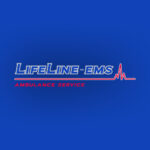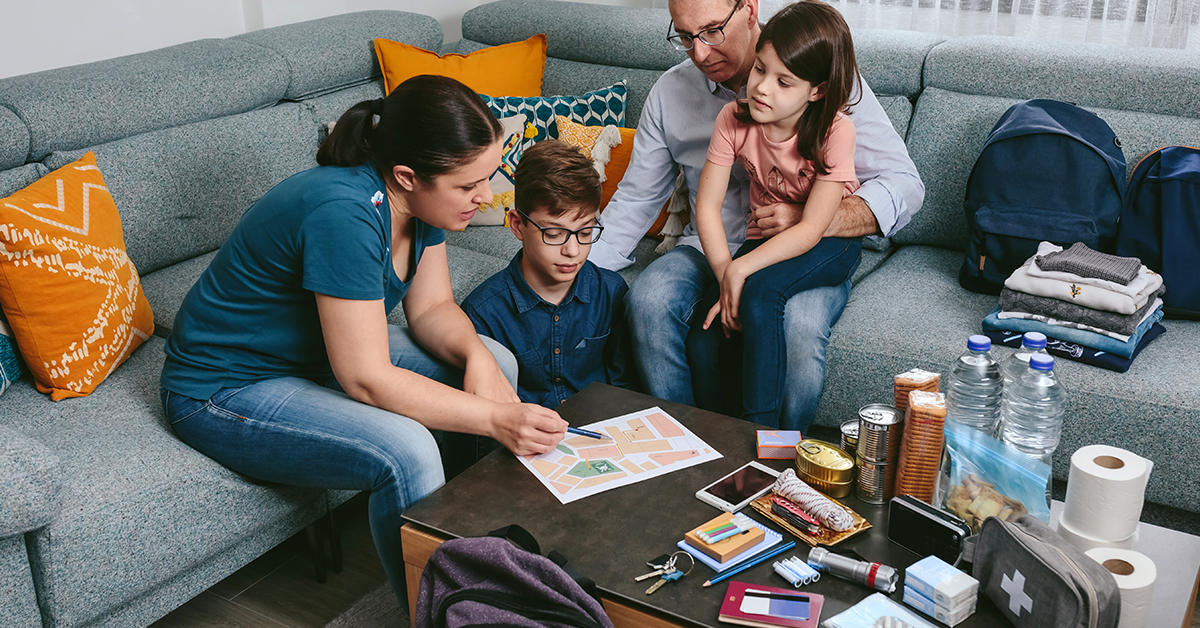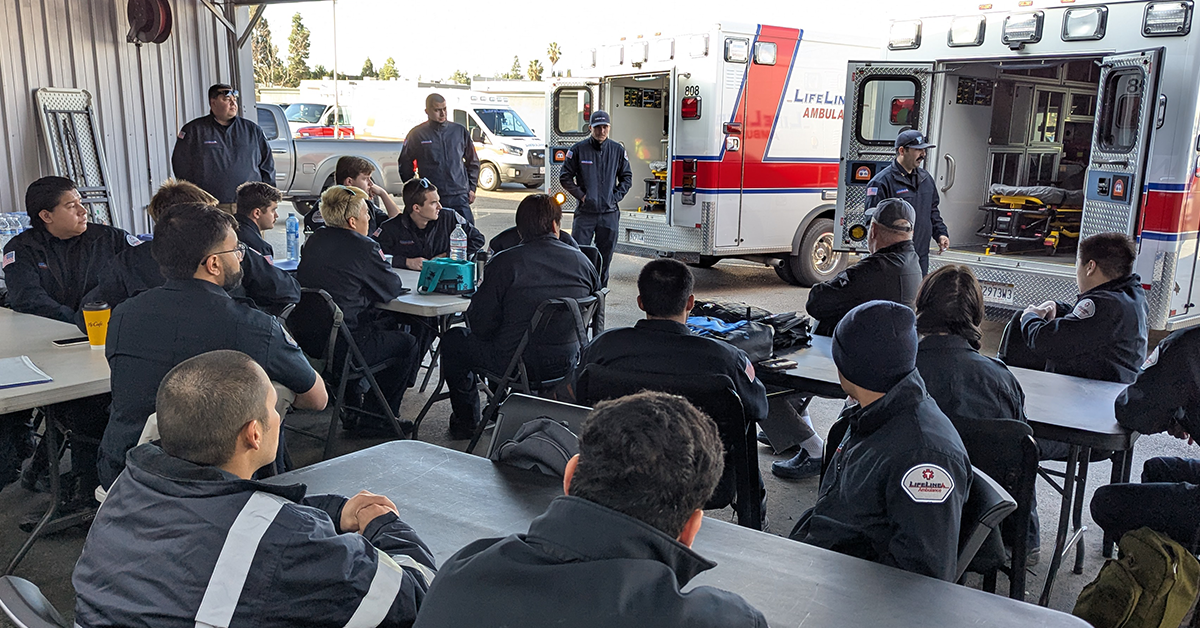Emergencies can happen at any time, often without warning. Whether it’s a natural disaster, medical emergency, or other crisis, being prepared can make all the difference in ensuring your safety and well-being. Creating an effective home emergency plan is essential for families, especially in areas like Los Angeles and Southern California, which are prone to earthquakes, wildfires, and other emergencies.
This guide outlines the key steps to creating a comprehensive emergency plan, ensuring you and your loved ones are ready to respond swiftly and confidently in the face of an unexpected event.
Why You Need a Home Emergency Plan
An emergency plan is a pre-determined strategy that outlines how your household will respond during an emergency. It includes important details such as evacuation routes, communication methods, and access to essential supplies. A well-thought-out plan minimizes panic and confusion, enabling you to act quickly and protect your family.
Benefits of Having an Emergency Plan:
- Improved Safety: A clear plan ensures everyone knows what to do, reducing the risk of injury or harm during an emergency.
- Faster Response Time: Knowing where to go and what steps to take can save precious time in critical situations.
- Reduced Stress: Being prepared brings peace of mind, allowing you to focus on staying calm and making informed decisions.
Step 1: Assess Potential Risks
The first step in creating an emergency plan is identifying the types of emergencies that could affect your area. In Southern California, residents should be prepared for a range of scenarios, including:
- Earthquakes: Southern California is situated along major fault lines, making it prone to earthquakes. Preparing for seismic activity is crucial.
- Wildfires: Hot, dry conditions increase the risk of wildfires, particularly in rural and suburban areas near open land.
- Flooding: Heavy rainstorms can cause flash flooding, especially in low-lying areas.
- Medical Emergencies: Unplanned medical events, such as cardiac arrest or injury, require immediate response.
By understanding the risks in your area, you can tailor your emergency plan to address the specific challenges you might face.
Step 2: Create an Emergency Communication Plan
Effective communication is critical during an emergency. Your communication plan should ensure that all household members can stay in touch and coordinate their actions.
Key Components of a Communication Plan:
- Emergency Contacts:
- List the phone numbers of family members, neighbors, and close friends.
- Include local emergency numbers, such as 911 and non-emergency lines for police and fire departments.
- Designated Meeting Places:
- Identify a safe meeting spot near your home in case of evacuation.
- Choose an alternate location outside your neighborhood in case the immediate area is unsafe.
- Out-of-Area Contact:
- Select a relative or friend outside your area to serve as a point of contact. This person can help relay information if local communication networks are disrupted.
- Backup Communication Methods:
- Consider alternative communication tools, such as two-way radios or texting apps, for situations where cell service is unavailable.
Step 3: Assemble an Emergency Supply Kit
An emergency supply kit contains the essential items your family will need to survive for at least 72 hours. Store your kit in an easily accessible location and ensure all household members know where it is.
Items to Include in Your Emergency Kit:
- Water: Store one gallon of water per person per day for at least three days.
- Non-Perishable Food: Include a variety of ready-to-eat foods, such as canned goods, protein bars, and dried fruit.
- First Aid Kit: Stock bandages, antiseptic wipes, pain relievers, and any necessary prescription medications.
- Flashlights and Batteries: Keep a flashlight and extra batteries on hand for power outages.
- Multi-Purpose Tool: A tool with a knife, screwdriver, and pliers can be invaluable in emergencies.
- Important Documents: Store copies of IDs, insurance policies, and medical records in a waterproof container.
- Cash: Include small bills and coins, as ATMs may not be operational.
- Personal Items: Don’t forget items like eyeglasses, baby supplies, and pet essentials.
Step 4: Plan for Evacuation
In some emergencies, you may need to leave your home quickly. An evacuation plan ensures you can do so safely and efficiently.
Steps to Create an Evacuation Plan:
- Identify Exits: Familiarize yourself with all possible exits from your home, including windows and doors.
- Map Out Routes: Plan multiple evacuation routes from your neighborhood in case primary roads are blocked.
- Prepare Your Vehicle: Keep your car fueled and stocked with a small emergency kit, including water, snacks, and a first-aid kit.
- Practice Drills: Conduct regular evacuation drills with your household to ensure everyone knows what to do.
Step 5: Educate and Train Your Household
An emergency plan is only effective if everyone in your household knows how to follow it. Take the time to educate and train all members of your family, including children and elderly relatives.
Training Tips:
- Teach Emergency Procedures: Show everyone how to use fire extinguishers, shut off utilities, and perform basic first aid.
- Assign Roles: Designate responsibilities, such as who will grab the emergency kit or assist with pets during an evacuation.
- Practice Regularly: Schedule practice sessions to rehearse your plan and address any gaps or questions.
Step 6: Stay Informed and Update Your Plan
Emergencies can evolve quickly, so staying informed and keeping your plan up to date is essential.
Ways to Stay Informed:
- Sign Up for Alerts: Register for local emergency alerts and notifications through your city or county’s website.
- Monitor the News: Stay tuned to local news channels and radio stations for updates.
- Check Weather Apps: Use weather apps to track severe weather conditions in real time.
Updating Your Plan:
- Review Annually: Update your plan at least once a year to account for changes in your household, such as new family members or pets.
- Restock Your Kit: Replace expired items in your emergency supply kit and ensure all equipment is in working order.
How LifeLine EMS Supports Emergency Preparedness in Southern California
As a trusted provider of emergency medical services, LifeLine EMS is dedicated to helping residents of Los Angeles and Southern California prepare for emergencies. From responding to medical crises to educating the community about preparedness, LifeLine EMS is a vital partner in ensuring safety and resilience.
Services Offered by LifeLine EMS:
- Emergency Medical Response: With advanced life support ambulances and highly trained EMTs and paramedics, LifeLine EMS delivers rapid and reliable care during medical emergencies.
- Community Education: LifeLine EMS offers CPR and first aid training, empowering individuals to respond effectively in emergencies.
- Event Standby Services: LifeLine EMS provides on-site medical support for public events, ensuring safety for large gatherings.
Keep Reading
Want more? Here are some other blog posts you might be interested in.
In the high-stakes world of emergency medical services, clear and effective communication can mean the difference between life and death. EMS professionals...
Emergency Medical Services is an ever-evolving field that requires constant learning and adaptation. With medical advancements, technological innovations, and increasing public health...
Emergency Medical Services s a high-stress, physically demanding profession that requires dedication, quick decision-making, and resilience. While the rewards of saving lives...






